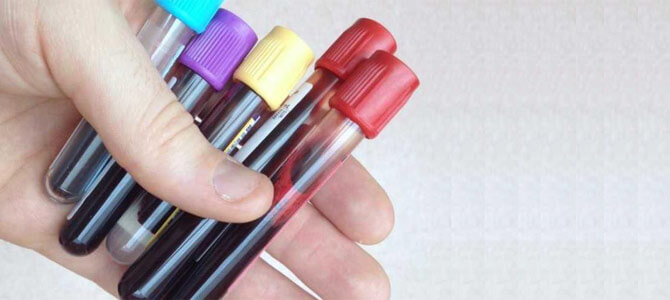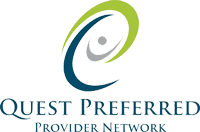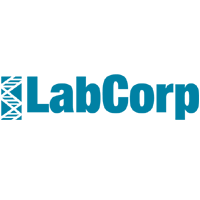
STD Testing Centers
Big Sur, CA
Same Day Service
No Doctor Visit Or Insurance Required
Accredited Drug Testing provides multiple STD tests at our Big Sur, California testing centers for individuals who may have been exposed to or showing symptoms of an STD. Millions of Americans have some form of an STD and our testing is provided in a confidential manner. STD tests at our Big Sur, CA locations may be ordered for one specific type of test or you may order a multiple panel screening which includes several STD tests. Same day service is available, and we have multiple Big Sur, California STD testing centers within minutes of your home or office. All testing information and results are confidential.
23625 HOLMAN HWY 22.2 miles
MONTEREY, CA 93940
757 Pacific Street, Suite B1 22.9 miles
Monterey, CA 93940
499 ALVARADO ST 23.1 miles
MONTEREY, CA 93940
245 WASHINGTON ST 23.3 miles
MONTEREY, CA 93940
1513 FREMONT BLVD STE E1 23.4 miles
SEASIDE, CA 93955
On-Site ONLY 23.8 miles
Seaside, CA 93955
501 Lighthouse Ave 24.2 miles
Monterey, CA 93940
1212 S Main St 27.9 miles
Salinas, CA 93901
947 Blanco Cir Ste A 28.2 miles
Salinas, CA 93901
212 San Jose Street, Suite 101 28.2 miles
Salinas, CA 93901
Testing services include physician referral, collection of the specimen, complete laboratory analysis and confidential and secure result reporting.
** Patients who have high insurance deductibles, co-pays or do not have insurance can access important health and wellness testing by scheduling/Ordering a confidential clinical test through Accredited Drug Testing By Phone or On-line.
The process to schedule a lab/blood test in Big Sur, California is fast and easy!
Step 1: Schedule/Order your test online at www.accrediteddrugtesting.com/lab-test-order or call our scheduling department at 800-221-4291. You do not need to visit a doctor to order a test.
Step 2: Provide confidential and secure patient information including the type of test, zip code of the location area you would like to take the test and payment information (self-pay).
When completed you will receive a patient registration form by email where you can immediately proceed to the testing location in the Big Sur, California area. Same day service is available and your registration pass will have the testing location address and hours of operation.
Step 3: After your test has been analyzed by one of our nationally CLIA and FDA certified laboratories (Quest/ LabCorp) your results will be sent through a confidential, secure and encrypted portal to the email address that you provided. In the event that the test is non-negative, abnormal or other circumstances, a consultation with the referring physician is available.
STD Definitions/Descriptions
STD stands for Sexually Transmitted Disease, also known as STI or Sexually Transmitted Infection, meaning that these diseases are most often, but not exclusively, spread by sexual intercourse.
STDs are passed from one person to another through sexual activity which can include vaginal intercourse, anal intercourse and/or anal intercourse. Though not as common, STDs can also be transmitted through intimate physical contact such as heavy petting.
STDs do not always cause symptoms, or they may only cause mild symptoms. This makes it very possible to have an infection and not know it. Therefore, if you are sexually active it is important to get tested at least once a year. You will find the most common types of STD and STI testing below.
HIV - HIV is a sexually transmitted disease (that can be spread outside of sexual contact) known as Human Immunodeficiency Virus (HIV). It is the virus that causes AIDS and interferes with the body's ability to fight infections.
Herpes 1 and 2 - Herpes is an infection caused by HSV (herpes simplex virus). This virus affects the external genital, anal region, mucosal surfaces and skin in other parts of the body. There are two types of herpes simplex viruses: HSV-1 9 herpes type 1, or oral herpes) and HSV-2 (herpes type 2, or genital herpes).
Gonorrhea - Gonorrhea is a common sexually transmitted disease that can cause infections in the genitals, rectum and throat for both men and women. If untreated it can cause serious health issues, however, if it is caught in time it can be cured with the right medicine.
Chlamydia - Chlamydia is a common sexually transmitted disease that may not show symptoms. However, those that do show symptoms may experience genital pain and discharge from the vagina or penis. If left untreated it can cause damaging effects to the woman's reproductive system.
Syphilis - Syphilis is a sexually transmitted disease that develops in different stages. The first stage involves a painless sore on the genitals, rectum or mouth. After that initial sore heals, the second stage is a rash. Then, there are no symptoms until years later which is the final stage - damaged brain, nerves, eyes and/or heart.
Many STDs can be easily cured with medication, so you can just finish your treatment and get on with your life. And even though some STDs can't be cured, there are lots of ways to treat your symptoms and prevent you from giving your STD to anyone you have sex with.
People with STDs can be in relationships, have sex, and live totally normal lives. Most people get an STD at least once, and millions are living with STDs now. Having an STD is nothing to feel ashamed of, and it doesn't mean you're "dirty" or a bad person , it just means you're a pretty normal human who got an infection. The reality is that STDs can happen to anybody who's ever been sexual with someone, which is almost everybody on earth. And a few STDs can be spread in non-sexual ways, too.
Accredited Drug Testing can schedule your STD test at an Big Sur, California testing facility in a confidential, friendly and professional manner. Call us today!
Handy Resources
Comprehensive Online Resources for Drug Testing
- National Institute on Drug Abuse (NIDA)
Provides comprehensive information on drug testing and its role in substance use disorder treatment.
- FDA: Drug Testing
Explains the FDA's role and regulations concerning drug testing for consumers.
- PDR.net
Provides detailed drug information and safety updates through a mobile-friendly platform.
- BeSafeRx - FDA
Resource by the FDA to help consumers identify and choose safe online pharmacies.
- SAMHSA: Drug Testing Resources for the Workplace
Resources and guidelines for drug testing in the workplace.
- Drugs.com
Provides drug information, side effects, and interactions for consumers and professionals.
- Drug Abuse Screening Test (DAST)
Online version of the DAST to help individuals assess whether they have a drug problem.
- Merck Manuals
Consumer-friendly medical resource providing comprehensive information on a wide array of health topics, including drug testing.
- SAMHSA Store
Provides access to resources and publications on substance use prevention and treatment.
- National Association of Boards of Pharmacy (NABP)
Information on state boards of pharmacy and regulations, including those related to drug testing.
- CDC: Workplace Health Promotion
CDC's resources on substance use and drug testing in the workplace.
- Mayo Clinic: Drug Testing
General information about the procedures and types of drug tests.
- MedlinePlus: Drug Testing
Offers information about various drug tests and their uses in medical diagnosis and treatment.
- University of Rochester Medical Center Health Encyclopedia
Provides a detailed entry on drug testing, including how tests are conducted and what they detect.
- World Health Organization (WHO)
International guidelines and information on public health, including substance abuse and drug testing.
- Healthline: Drug Testing
Consumer health site offering information on how drug tests work and what they look for.
- WebMD: Drug Testing
Provides a patient-oriented overview of drug testing and its purposes.
- National Center for Biotechnology Information (NCBI)
Provides a vast database of scientific studies, including research on drug testing and its effectiveness.
AI Overview
Overview of STD Testing
Sexually Transmitted Disease (STD) testing is a critical component of healthcare, essential for detecting and managing infections transmitted through sexual contact. STD testing is recommended for anyone who is sexually active, as early detection and treatment can prevent serious health consequences and limit the spread of infections to others.
Importance of STD Testing
Regular STD testing is vital because many infections often do not show symptoms immediately, or symptoms may be mild and go unnoticed. Untreated STDs can lead to severe health issues, including infertility, complications during pregnancy, and increased risk of acquiring other STDs, including HIV.
Common Types of STD Tests
- HIV Testing: Performed through blood or saliva samples to detect the presence of HIV antibodies or antigens.
- Chlamydia and Gonorrhea: These bacterial infections are typically tested via urine tests or swabs of the genital area.
- Syphilis: Diagnosed through blood testing, which can detect antibodies produced in response to the infection.
- Herpes: Although no cure exists, testing for herpes involves blood tests or swabs from an active outbreak.
- Hepatitis B and C: Blood tests are used to diagnose these viral infections, which affect the liver.
When to Get Tested
- After Unprotected Sex: It's advisable to get tested if you've had unprotected sexual contact with a new partner or multiple partners.
- If Symptoms Occur: Symptoms such as sores on the genitals, pain during urination, or unusual discharge are indications for testing.
- Regular Screenings: Annual or more frequent STD testing may be recommended for active individuals, especially if they have multiple partners.
What to Expect During STD Testing
The testing process is straightforward, involving a physical examination, the collection of samples (blood, urine, swabs), and sometimes a visual inspection of affected areas. Confidentiality is a cornerstone of STD testing, ensuring privacy and discretion in handling patient information and test results.
Benefits of STD Testing
- Early Detection and Treatment: Allows for timely treatment that can effectively manage symptoms and prevent transmission to others.
- Peace of Mind: Provides reassurance and helps maintain your health and the health of your partners.
- Prevention of Complications: Reduces the risk of the long-term health issues associated with untreated STDs.
Understanding the importance of STD testing and participating in regular screenings can significantly impact personal health and public health outcomes. It is an essential step in responsible sexual health management.
"When You Need A Test, Choose The Best"
AccreditedDrugTesting.Com
800-221-4291


Big Sur is a rugged and mountainous section of the Central Coast of California between Carmel Highlands and San Simeon, where the Santa Lucia Mountains rise abruptly from the Pacific Ocean. It is frequently praised for its dramatic scenery. Big Sur has been called the "longest and most scenic stretch of undeveloped coastline in the contiguous United States," a "national treasure that demands extraordinary procedures to protect it from development" and "one of the most beautiful coastlines anywhere in the world, an isolated stretch of road, mythic in reputation." The stunning views, redwood forests, hiking, beaches, and other recreational opportunities have made Big Sur a popular destination for about 7 million people who live within a day's drive and visitors from across the world. The region receives about the same number of visitors as Yosemite National Park, but offers extremely limited bus service, few restrooms, and a narrow two-lane highway with few places to park alongside the road. North-bound traffic during the peak summer season and holiday weekends is often backed up for about 20 miles (32 km) from Big Sur Village to Carmel.
The unincorporated region encompassing Big Sur does not have specific boundaries, but is generally considered to include the 71-mile (114 km) segment of California State Route 1 between Malpaso Creek near Carmel Highlands in the north and San Carpóforo Creek near San Simeon in the south, as well as the entire Santa Lucia range between these creeks. The interior region is mostly uninhabited, while the coast remains relatively isolated and sparsely populated, with between 1,800 and 2,000 year-round residents and relatively few visitor accommodations scattered among four small settlements. The region remained one of the most inaccessible areas of California and the entire United States until, after 18 years of construction, the Carmel–San Simeon Highway (now signed as part of State Route 1) was completed in 1937. Along with the ocean views, this winding, narrow road, often cut into the face of towering seaside cliffs, dominates the visitor's experience of Big Sur. The highway has been closed more than 55 times by landslides, and in May 2017, a 2,000,000-cubic-foot (57,000 m3) slide blocked the highway at Mud Creek, north of Salmon Creek near the San Luis Obispo County line, to just south of Gorda. The road was reopened on July 18, 2018.
The region is protected by the Big Sur Local Coastal Plan, which preserves it as "open space, a small residential community, and agricultural ranching." Approved in 1986, the plan is one of the most restrictive local-use programs in the state, and is widely regarded as one of the most restrictive documents of its kind anywhere. The program protects viewsheds from the highway and many vantage points, and severely restricts the density of development. About 60% of the coastal region is owned by governmental or private agencies which do not allow any development. The majority of the interior region is part of the Los Padres National Forest, Ventana Wilderness, Silver Peak Wilderness or Fort Hunter Liggett.
The original Spanish-language name for the mountainous terrain south of Monterey was el país grande del sur, which means "the big country of the south." The name el Sud (also meaning "the south") was first used in the Rancho El Sur land grant made in 1834. In 1915, English-speaking settlers formally adopted "Big Sur" as the name for their post office.


